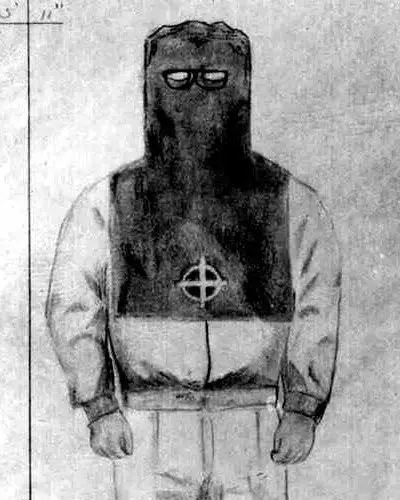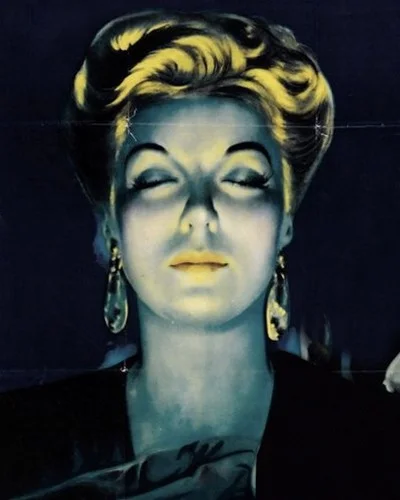For many years Dr Crippen was a name that would make the blood run cold. Once the star exhibit of Madame Tussaud’s Chamber of Horrors, the infamous murderer has become a byword for cold eyed evil.
His case became famous because of the global communications age, with Crippen becoming the first fugitive from justice to be captured with the aid of the then new wireless telegraph.
Hawley Harvey Crippen was an American homeopath living in London, charged in 1910 with murdering his wife Cora. His capture, trial, conviction and execution were played out on newspaper front pages around the world.
The Doctor’s reserved, emotionless demeanour convinced readers of his guilt, and at his death by hanging in November that year he had few defenders.
Crippen’s trial was one of the first to centre around the embryonic discipline of forensic pathology, with the prosecution presenting seemingly incontrovertible scientific evidence of his guilt.
The story begins with the disappearance of Crippen’s wife Cora after a dinner party at their home in January 1910. When police questioned the Doctor about his wife’s whereabouts he first told them she had moved back to America, where she had then died. Later he changed his story, claiming she had actually returned to America to live with her lover, music hall actor Bruce Miller.
Hawley Crippen was, by all accounts, the classic henpecked husband, constantly undermined by his overbearing, flamboyant wife. Cora was often openly unfaithful to Hawley, taking a string of younger lovers and flaunting the fact in public. Crippen himself had also taken a lover, secretary Ethel Le Neve, in response to his wife’s infidelity. The motive for murder was as old as the hills.
With the police sniffing around, Crippen and his mistress went on the run, believing it was only a matter time before they were arrested. Their disappearance led to further searches of the house, culminating in the discovery of a horror show in the coal cellar - a mass of rotting dismembered human flesh wrapped in a pair of old pyjamas.
Pioneering forensic pathologist Bernard Spilsbury determined the remains to be of Crippen’s wife Cora, by matching surgery marks on a piece of still intact skin. Spilsbury also found traces of the drug hyoscine in the flesh, which police discovered Crippen had purchased shortly before Cora’s disappearance.
Things looked bad for Hawley Harvey Crippen, exacerbated by his decision to leave the country. Attempting to abscond to Canada aboard the SS Montrose, the couple posed as father and son, with the diminutive Ethel disguised as a boy.
The ship's captain Henry George Kendall, aware that Scotland yard were pursuing the pair, had seen through Ethel’s paltry disguise and used the ship's brand new Marconi wireless telegraph to radio his suspicions to the authorities:
"Have strong suspicions that Crippen London cellar murderer and accomplice are among saloon passengers. Accomplice dressed as boy. Manner and build undoubtedly a girl"
Henry George Kendall.
Inspector Walter Dew of Scotland Yard boarded a faster ship to Quebec and was waiting with the Canadian police to arrest Crippen and Le Neve as the SS Montrose arrived in the harbour. This apprehension, using wireless communications, was an historical first in 1910.
The subsequent trial at the Old Bailey was dominated by the new science of forensics, with Crippen himself showing little emotion or remorse during the proceedings. The jury swiftly found him guilty and on the 22nd October Justice Richard Everard Webster donned a black cap to deliver his damning verdict.
"Hawley Harvey Crippen, you have been convicted, upon evidence which could leave no doubt on the minds of any reasonable men, that you cruelly poisoned your wife, that you concealed your crime, you mutilated her body, and disposed piecemeal of her remains.
On the ghastly and wicked nature of the crime I will not dwell", the judge added, before delivering the ultimate punishment of death by hanging. Crippen was subsequently executed at Pentonville jail on November 23rd, his only request to be buried with a photograph of Ethel.
Whilst few questioned the Doctor’s guilt, some aspects of the case were strange. The remains found in the basement of the Crippens house were missing the head, limbs and skeleton. Why had Crippen gone to the trouble of dismembering and disposing of his wife’s body elsewhere only to leave part of it in his own home?
These curiosities aside, it wasn't until 2007 that a serious challenge to the longstanding belief in Crippen’s guilt emerged. Like most people, forensic toxicologist John Trestrail had heard the name Dr Crippen, but it wasn't until he learnt of the details of the case that alarm bells started to ring.
Cora Crippen's murder contained one feature so unusual that Trestrail had never encountered it before in over 20 years of practise. According to the prosecution pathologist Bernard Spilsbury, the cause of death was poison, yet Crippen was also accused of dismembering the body.
For Trestrail, this made no sense. Murderers invariably chose poison to kill their victims because they want to pass the death off as natural or an accident. So why dismember the body?
Trestrail’s investigation pushed Crippen’s descendants to commission new tests on the piece of tissue Spilsbury had used to identify the body. The results were a bombshell - the DNA extracted from the remains was not from Cora.
Was Dr Crippen, a man whose name has become synonymous with murder, innocent after all?
Evidence For
The Inexplicable Dr Crippen
For forensic toxicologist John Trestrail, the Crippen case was an anomaly. As a veteran of hundreds of FBI cases, and the author of standard textbooks on the subject, Crippen’s mutilation of a victim he had also poisoned was something he had never seen before.
"A poisoner wants the death to appear natural so he can get a death certificate. This is the only case I know of where the victim was dismembered. It doesn't make sense."
If Crippen was the culprit, then he had essentially filleted his wife’s body, leaving nothing but a tangled mess of flesh and skin hidden beneath a slab in his cellar. Gone entirely were Cora’s head, limbs, skeleton and sex organs.
The grisly treatment of Cora’s corpse raises the obvious question as to whether someone as timid as Crippen could have done something so horrific. But more crucially, why did he?
Having successfully disposed of the majority of his wife’s body, indeed none of the other body parts have ever been found, why did Crippen leave these small scraps wrapped up in a pair of pyjamas where they would surely be discovered?
The strangeness of this behaviour has led some to speculate that Crippen was framed by the police, although there appears little other evidence or even motive for this to be the case. Clearly if Cora had later turned up alive, it would have been incredibly damaging for Spilsbury and the police to have staked their reputation on the belief that she was buried in Crippen’s cellar.
Those remains did contain a piece of skin featuring what Spilsbury identified as a surgery scar. This scar was found to be consistent with a 4 inch scar Cora had from an operation on her abdomen some years previously.
In the pre-CSI era and to a jury unused to forensic evidence, Spilsbury's findings looked incredibly persuasive, so much so that it took them just 27 minutes to return a guilty verdict at the trial.
Spilsbury was a brilliant man whose findings during his lifetime were rarely challenged. However, working with primitive equipment at the infancy of forensics, some of his conclusions look somewhat less impressive to modern eyes.
A modern day forensic scientist, David Foran of Michigan State University, believes Spilsbury was overreaching in his evidence at the Crippen trial and the ‘surgery scar’ was nothing more than a fold of skin, something the defense at the trial had argued to little avail.
Foran believes the marks on the skin are simply natural folds because of the visible hair follicles present on the surface, something that would not be the case if it was scar tissue.
Trestrail was also sceptical about the poison Crippen was supposed to have used, a common sedative and depressant named hyoscine that he’d never seen used in any other poisoning case in the literature.
With hyoscine so rare in poisoning cases and toxicology still primitive in 1910, Trestrail believes the prosecution's team would not even have searched for, let alone found the presence of the drug in the remains.
Several theories have been posited about the presence of hyoscine in the body recovered from Crippen's cellar. Renowned barrister Edward Marshall Hall thought Crippen may have been using hyoscine on his wife as a sexual depressant, due to her promiscuity, and had accidentally given her an overdose.
If the theory is true, it still leaves us with the conundrum of why Crippen had disposed of his wife's body in two locations, electing to leave lumps of flesh in his own cellar. Nobody has ever provided a convincing motive for Crippen’s actions in this regard, and it remains a tantalising mystery at the heart of the case.
DNA
Whilst the evidence used to convict Dr Crippen at his trial now looks speculative at best, Trestrail’s trump card is something undreamt of in the days of Bernard Spilsbury - DNA.
Spurred on by his investigation, Trestrail enlisted forensic biologist David Foran to conduct DNA tests on a sample of skin tissue preserved from Spilsbury's original 1910 slides at the Royal London Hospital.
Trestrail had used genealogists to meticulously unravel Cora Crippen's convoluted family tree in the hope of finding modern day relatives, and eventually found Marie Hamel, a 64 year Californian living quietly in a suburb of Los Angeles.
Foran’s team at the forensic biology lab at Michigan State University compared a DNA swab provided by Hamel against DNA from the century old Royal hospital samples only to come to a startling conclusion that threatened to turn one of crimes most famous cases on its head.
The skin Spilsbury had used all those years ago to send Dr Crippen to the gallows was not from Cora Crippen. In fact, the DNA wasn't even female. With one fell swoop both the central case against Crippen - that he had murdered his wife, and rumours that he may have been conducting illegal backstreet abortions, crumbled.
Foran’s results have come under fire but he stands firm against criticism that the samples were too old to reliably test. "A slide in a museum is a pretty nice way to preserve DNA. Compare that to bones that have been in the ground for thousands of years." He stated, "There was a lot more DNA work that showed unequivocally that the remains were male”.
Other critics believe that the modern day relatives of Cora may not actually be blood relations, thus nullifying the results, although this is something denied by Marie Hamel, who is the granddaughter of Cora’s half-sister Bertha Mersinger.
Assuming the DNA findings are correct, the results have led to speculation that Crippen may have murdered one of Cora’s lovers or even that he was some undiscovered Edwardian serial killer.
Whatever the truth, the DNA evidence suggested that even if Crippen had killed Cora, he had not buried her remains at Hilldrop Crescent.
Suppressed Evidence
In light of the circumstantial evidence against him, and with such an obvious motive for murder, Crippen’s explanation for his wife's disappearance always looked unbelievable.
However, some tantalizing hints do exist that suggests the possibility he was telling the truth. Most of these were suppressed at the trial for fear they might damage the case against the Doctor, but have been rediscovered over the years by researchers into the enduring case.
One statement obtained by the police, not used at the trial, was from a cab driver who testified that two weeks before Cora’s disappearance he had helped a woman matching her description carry six steamer trunks from the house at Hilldrop Crescent.
Similar evidence that around the same time Cora may have tried to withdraw a large sum of money from the Crippen deposit account was also not followed up.
Several letters were sent to Crippen at Pentonville prison from a woman claiming to be Cora, one stating “I don't want to be responsible for your demise if I can save you in this way, but I will never come forward personally, as I am happy now.”
Whilst it’s generally thought these letters are hoaxes, an all too common hindrance in many high profile criminal case, they were never passed on to Crippen’s defense and so were not investigated further to determine their provenance.
Evidence Against
A Guilty Mind
If the forensic case against Dr Crippen now looks decidedly unsound, the circumstantial one remains as strong as ever. Crippen’s lies, suspicious behavior, his flight from justice and his refusal to talk are all redolent of some kind of guilt. But was it of his wife’s murder?
Shortly after Cora’s disappearance had become noticed, Crippen started to claim that his wife had returned to the United States. He would later write to her friends saying that Cora had unfortunately been taken ill and passed away.
This naturally aroused suspicion. Why had Cora not written to her friends herself, or told them she was returning to America? Suspicion only grew when Crippen moved his mistress Ethel Le Neve into his house, and she begun to openly wear Cora’s clothing and jewelry.
After a few weeks had passed, and the whispers about Crippen had become louder, Chief Inspector Dew of the Metropolitan Police called by to question the Doctor about his wife's absence.
Crippen admitted to Dew that he had made up the entire story about his wife’s death out of embarrassment because she had in fact eloped to Chicago with one of her lovers from the music hall.
Having made Dew his confidente about this delicate matter, the Detective was inclined to believe Crippen. A subsequent search of the house revealed nothing and Dew elected to drop the matter.
What Hawley Crippen did next did not look like the actions of an innocent man. Scenting that the police may not believe him, he and Ethel fled the country, taking the ferry to Brussels before moving on to Antwerp where they boarded the SS Montrose for their ill fated voyage to Canada.
Would a man entirely innocent of wrongdoing really have upturned his whole life to become a fugitive? It's impossible to know what was going on in Crippen’s mind at this time, but his actions almost look tantamount to a confession.
The case against Dr Crippen looked open-and-shut. Shortly after his wife vanished without trace, body parts are found in his cellar. At the first sign of the police, he fled the country. Any prosecution would have successfully won the case against him on circumstantial evidence alone.
For their part, Crippen’s defense attempted to argue the human remains had predated their client’s residence at Hilldrop Crescent, and must have been deposited there by a previous tenant. However, the prosecution would soon thwart Crippen's last chance of escaping the gallows.
Traces of Cora
Crippen’s trial at the old Bailey lasted just five days. Faced with a barrage of damning evidence against their client, the defense countered with the argument that the body buried under the coal cellar was not Cora and had been left there before the couple had moved into the house.
This line of defense looked futile from the off. Hawley and Cora Crippen had moved into the house at Hilldrop Crescent in 1905, and the body was discovered in 1910. Could the couple really have lived there for more than five years unaware that a putrefying corpse was buried in a shallow grave in their ground floor coal cellar?
Crippen’s hopes were comprehensively dashed when fragments of a pyjama top found amongst the flesh was traced back to a local firm of shirtmakers from the still intact label which read ‘Jones Bros (Holloway) Ltd’.
An employee from the firm was called to testify who confirmed to the courtroom that Jones Bros had not become a limited company until 1906, the year after Crippen had moved into the house. This put to bed any doubt that whoever was buried in the cellar had been put there before Crippen was a resident.
But in order to be sure of the conviction, the prosecution had to prove beyond a reasonable doubt that it was specifically Cora, and not some other unfortunate who had somehow met a grim fate in the Crippen cellar.
The scar Bernard Spilsbury had found on a piece of skin was the most obvious connection, matching as it did a surgery scar Cora was known to have. Also strewn amongst the remains were three Hindes hair curlers of the type Cora was known to use, wrapped in brownish blond hair that matched the Doctor’s missing wife.
To round off the case against Crippen, the prosecution produced evidence from an Oxford Street chemist that Crippen had purchased a large quantity of the drug hyoscine - he claimed as an ingredient for his homemade patent medicines, a fortnight before Cora’s disappearance. This was the very toxic substance prosecution toxicologist William Wilcox had detected in the remains from the coal cellar.
Given the weight of evidence against him, the jury at the trial really had little choice but to send Crippen to the gallows. Back in 1910 the criminal justice system enacted it’s verdicts with startling haste, and just a month after his sentencing Crippen was hung.
Ethel Le Neve was tried separately and acquitted of been an accessory after the fact, after which she emigrated to America and disappeared from the public eye. The case, however, has never left the public conscience and even inspired a popular song of the era:
Whether Dr. Crippen deserves his reputation as one of history's most notorious murders is debatable. The case may have become one of countless obscure domestic murders if not for the novelty of Crippen’s capture and the gruesome nature of the crime.
The Doctor’s presence amongst other infamous murderers in the chilling Chamber of Horrors at Madame Tussauds, and his depiction in fiction have also done much to secure his place in the public imagination.
Today, modern forensics has raised serious doubts about the identity of the victim in the coal cellar. On one hand we have 1910 era CSI and an iron-clad circumstantial case, on the other we have seemingly incontrovertible DNA evidence that the body was not Crippen’s wife.
The two are not entirely irreconcilable. Even if Dr Crippen’s unlikely story about Cora was true, and he did not murder her, he was surely responsible for someone's death. But Crippen never talked, and whatever secrets lurked in the gloom of that dank cellar went with him to his grave.
Was the notorious Dr Crippen, convicted and executed in 1910 for the murder of his wife Cora, actually innocent? - add your comment below
























